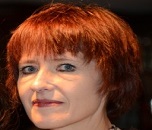Sessions
Cellular Regeneration & Skin Rejuvenation Technologies
Rapid advancements in regenerative dermatology continue to reshape aesthetic medicine, with cellular rejuvenation emerging as a powerful scientific frontier. Modern approaches integrate fibroblast activation, extracellular matrix restoration, and advanced biomimetic peptides to stimulate intrinsic repair pathways. Breakthroughs in autologous cellular concentrates, exosome-rich formulations, and bioactive scaffolds now enable physicians to target aging at the molecular level by reprogramming senescent cell behavior. Regeneration-focused therapies emphasize the enhancement of dermal elasticity, collagen synthesis, and microvascular perfusion, offering safer and more durable outcomes than conventional cosmetic procedures. These innovations support skin restoration in conditions such as photoaging, wrinkles, scarring, and loss of volume, while maintaining natural tissue integrity. With ongoing research into cellular crosstalk, growth factor signaling, and microenvironment modulation, regenerative skin rejuvenation is progressing toward fully personalized treatment protocols. As regenerative science intersects with aesthetic dermatology, clinicians can now design treatment plans that not only restore appearance but also enhance overall skin health through biologically harmonized intervention strategies.
Stem Cell–Driven Aesthetic Dermatology Innovations
Stem cell–based technologies represent one of the most transformative developments in modern aesthetic medicine. Researchers are exploring mesenchymal stem cells, adipose-derived stem cells, and induced pluripotent stem cells as potent resources for dermal repair, collagen induction, and regeneration of aged or damaged tissue. These cell populations provide cytokines, growth factors, and immunomodulatory molecules capable of reversing inflammation-driven aging processes. Advanced delivery techniques, such as scaffold-based implantation, microinjection systems, and topical stem-cell–derived vesicles, bring unprecedented precision to aesthetic applications. Clinical investigations show promising results in improving skin laxity, pigmentation irregularities, scarring, and hair restoration by promoting natural tissue renewal from within. Innovations include bioengineered stem cell matrices, cell-conditioned serums, and hybrid regenerative–aesthetic protocols that combine cellular therapies with lasers or microneedling for enhanced outcomes. As regulatory science advances and safety profiles become more refined, stem cell–based cosmetic dermatology is moving toward mainstream adoption, offering long-lasting, biologically harmonious aesthetic enhancement grounded in next-generation regenerative technology.
Genomic Dermatology & Precision Cosmetic Medicine
Genomic analysis is redefining dermatology by enabling clinicians to understand individual variations in skin aging, inflammatory response, pigmentation pathways, and susceptibility to cosmetic disorders. Precision cosmetic medicine utilizes genetic sequencing, transcriptomic biomarkers, and epigenetic profiling to tailor treatments based on each patient’s biological blueprint. This science-driven approach allows dermatologists to select customized interventions that optimize therapeutic response while minimizing adverse effects. Advances in genomic dermatology also support prediction of treatment outcomes for lasers, injectables, and topical formulations, enhancing clinical decision-making. Gene-expression–based skincare formulations, targeted pathway inhibitors, and epigenetic modulators are being developed to correct dysfunctions at the molecular level, promoting personalized rejuvenation strategies. As beauty and genetics increasingly converge, dermatology moves away from universal treatment models toward individualized care powered by predictive algorithms and molecular diagnostics. This integration of genomics strengthens the capacity to prevent premature aging, manage chronic skin diseases, and achieve aesthetic goals with unparalleled precision and biological insight.
3D Bioprinting of Skin & Tissue Engineering
Three-dimensional bioprinting is revolutionizing dermatology by enabling precise fabrication of skin layers, vascular networks, and engineered tissues that mimic natural physiological structure. Advances in biomaterials, bioinks, and cellular architecture have expanded possibilities for reconstructive surgery, wound healing, scar revision, and cosmetic applications. Bioprinted skin grafts offer superior integration, improved aesthetic outcomes, and personalized structural design compared to traditional grafting methods. Tissue engineering further supports regeneration through scaffolds enriched with growth factors, stem cells, and biomimetic matrices that enhance dermal restoration. In cosmetic science, 3D bioprinting shows potential for testing skincare products, developing personalized implants, and modeling pigmentation or aging pathways for research. As these technologies translate into clinical workflows, they promise safer and more effective therapeutic options for burns, trauma, congenital defects, and soft-tissue reconstruction. The combination of bioprinting and regenerative aesthetics positions dermatology at the forefront of medical innovation, offering customized solutions powered by engineering, biology, and computational precision.
AI-Guided Dermatologic Diagnostics & Imaging Analytics
Artificial intelligence is transforming dermatologic evaluation by delivering faster, more accurate detection of skin diseases and cosmetic concerns. High-resolution imaging, machine learning models, and automated dermoscopic analysis enhance diagnostic accuracy for conditions such as melanoma, pigmentation disorders, acne, vascular anomalies, and aging indicators. AI-driven tools enable early detection, risk stratification, and real-time treatment planning through pattern recognition and predictive analytics. Advanced algorithms also support quantitative assessment of treatment outcomes, allowing clinicians to track progress in rejuvenation procedures or therapeutic interventions. Integration of AI into teledermatology expands access to expert consultation, while imaging analytics improve personalization of cosmetic treatments by analyzing skin texture, elasticity, hydration, and photodamage. As data sets grow and models evolve, AI-powered dermatology becomes more precise, ethical, and scalable, enabling clinicians to combine technological intelligence with clinical expertise for improved aesthetic and medical decision-making.
Nanocosmeceuticals & Targeted Dermal Delivery Systems
Nanotechnology reshapes the landscape of dermatology and cosmetic medicine by enabling ultra-precise delivery of active ingredients into deeper skin layers. Nanocarriers—such as liposomes, nanoemulsions, dendrimers, and polymeric nanoparticles enhance bioavailability, stability, and absorption of therapeutic molecules. These systems allow targeted treatment of pigmentation issues, photoaging, inflammation, acne, and collagen degradation by bypassing the skin barrier with controlled release mechanisms. Nanocosmeceuticals are increasingly integrated into serums, sunscreens, regenerative formulations, and anti-aging products, offering superior efficacy with minimized irritation. Clinical research has expanded applications to include drug-loaded nanoparticles for psoriasis, atopic dermatitis, and hair disorders, demonstrating the versatility of this platform. With advances in smart materials and stimuli-responsive delivery systems, nanotechnology enables biologically optimized treatment designs tailored to individual skin needs. The merging of nanoscience with cosmetic dermatology drives a new generation of high-performance, precision-engineered skincare and therapeutic solutions.
Immunodermatology & Autoimmune Skin Disorder Therapeutics
Immunodermatology explores the intricate immune pathways underlying conditions such as psoriasis, vitiligo, lupus, and atopic dermatitis. Breakthroughs in cytokine targeting, immunomodulatory biologics, and T-cell–directed therapies have transformed outcomes for patients with chronic autoimmune skin disorders. Research continues to uncover molecular drivers of immune dysregulation, enabling development of next-generation therapeutics such as JAK inhibitors, checkpoint modulators, and peptide-based immune stabilizers. These advances also benefit cosmetic dermatology, where inflammation plays a significant role in aging, pigmentation irregularities, and scarring. By understanding immune–skin interactions, clinicians are better equipped to design holistic treatment plans that restore barrier function, reduce systemic inflammation, and enhance regenerative outcomes. Innovations in immune profiling, personalized biologic dosing, and microenvironment modulation are advancing care toward long-term control and superior skin quality.
Advanced Laser Science & Energy-Based Aesthetic Devices
Modern laser and energy-based systems represent some of the most sophisticated tools in aesthetic dermatology. Innovations in fractional technology, picosecond lasers, radiofrequency microneedling, ultrasound-based tightening, and plasma devices enable highly targeted treatment of wrinkles, scars, vascular lesions, pigmentation, and skin laxity. These technologies deliver controlled microthermal zones that stimulate collagen remodeling and dermal regeneration while minimizing downtime. Enhanced cooling systems, wavelength optimization, and real-time sensor feedback improve patient comfort and treatment safety. Emerging technologies also integrate AI-guided calibration for personalized energy delivery based on skin type, condition severity, and desired outcomes. As devices evolve, aesthetic procedures become more effective, precise, and minimally invasive, offering natural-looking improvements with reduced risk. The fusion of energy-based innovation with regenerative dermatology continues to expand therapeutic possibilities.
Dermal Microbiome Modulation & Skin Health Optimization
Growing research reveals that the skin microbiome plays an essential role in inflammation, barrier health, aging, and response to cosmetic treatments. Understanding microbial ecosystems and dysbiosis allows clinicians to utilize targeted strategies—such as probiotics, prebiotics, postbiotics, and microbiome-friendly formulations—to restore balance and enhance skin resilience. Microbial modulation supports treatment of acne, eczema, rosacea, sensitivity, and pigmentation disorders by regulating immune activity, pH stability, and lipid profiles. Advanced omics technologies enable mapping of microbial diversity and identifying biomarkers linked to cosmetic outcomes. Personalized microbiome-based skincare and therapeutic regimens are emerging as powerful tools to optimize long-term skin wellness. As microbiome science advances, dermatology integrates ecology, genetics, and immunology to promote naturally balanced, health-driven aesthetic results.
Pigmentation Disorders: Molecular Pathways & Novel Treatments
Pigmentation disorders including melasma, vitiligo, hyperpigmentation, and post-inflammatory pigmentation—are influenced by complex molecular pathways involving melanocyte activity, oxidative stress, hormone response, and genetic predisposition. Understanding these mechanisms allows development of more effective therapeutic strategies. Novel agents such as tyrosinase inhibitors, synthetic peptides, antioxidants, and pathway-specific modulators help regulate melanin production with precision. Advanced lasers, chemical peels, and combination treatments further enhance outcomes by targeting pigment at multiple levels of the skin. Research into melanocyte-keratinocyte communication, photobiology, and inflammatory triggers continues to refine intervention protocols. By integrating molecular science with clinical expertise, dermatologists can achieve more stable and longer-lasting pigment correction with reduced risk of recurrence.
Aesthetic Injectables: Biostimulators, Fillers & Regenerative Agents
Aesthetic injectables are undergoing a major evolution as biostimulators and regenerative compounds replace traditional volumizing agents. Modern fillers incorporate bioactive molecules that stimulate collagen production, elastin regeneration, and dermal matrix enhancement. Biostimulatory agents offer natural, long-term improvements in skin texture, firmness, and contour through controlled biological remodeling. Growth factor–infused injectables, polynucleotide-based formulations, and hybrid fillers with regenerative properties are gaining prominence for their ability to combine structural support with tissue rejuvenation. Precision injection techniques, ultrasound-guided placement, and personalized anatomical mapping increase safety and refine aesthetic outcomes. As injectable science advances, clinicians gain access to sophisticated tools that deliver subtle, natural, and regenerative facial enhancement.
Hair Follicle Regeneration & Precision Trichology
Breakthroughs in trichology emphasize regeneration of hair follicles through cellular therapy, molecular modulation, and biomechanical stimulation. Advanced approaches include stem-cell–conditioned media, platelet-rich biomaterials, exosome-based therapies, and low-level laser technology to activate dormant follicles and enhance microvascular support. Genetic and hormonal mapping enables personalized treatment plans targeting the root causes of alopecia. Novel agents, including signaling pathway inhibitors and topical microencapsulation systems, show promise in restoring healthier and denser hair growth. Precision trichology integrates regenerative biology, dermatologic imaging, and targeted pharmacology to improve treatment outcomes for both cosmetic and medical hair concerns.
Dermato-Oncology: Early Detection & Targeted Therapies
Dermato-oncology continues to advance through improvements in molecular diagnostics, imaging technologies, and personalized therapeutics for skin cancers. Early detection strategies utilize high-resolution dermoscopy, AI-powered lesion analysis, and genetic biomarker profiling to identify malignancies at the earliest stages. Targeted therapies—including BRAF inhibitors, immunotherapies, checkpoint blockers, and photodynamic techniques—offer effective, tissue-sparing solutions with improved survival outcomes. Integration of genomic insights enhances precision in selecting therapies for melanoma, basal cell carcinoma, and squamous cell carcinoma. Advances in minimally invasive procedures and regenerative reconstruction further support functional and aesthetic recovery following cancer treatment.
Scar Remodeling, Wound Healing & Collagen Engineering
Scar management and wound healing are evolving through advanced understanding of fibroblast behavior, collagen remodeling, and microenvironment regulation. Novel therapies such as fractional lasers, microneedling radiofrequency, peptide-rich formulations, and stem-cell–derived vesicles enhance tissue regeneration and reduce fibrosis. Collagen engineering leverages biomimetic scaffolds, growth factors, and matrix-modifying molecules to restore structural harmony in damaged skin. Innovative wound care strategies integrate moisture balance, bioactive dressings, and cellular therapies to accelerate healing while minimizing scarring. Combining regenerative science with aesthetic dermatology produces smoother, more functional, and visually improved skin outcomes.
Clinical Safety, Regulatory Standards & Quality Assurance in Cosmetic Medicine
As aesthetic and regenerative technologies advance, maintaining high safety standards becomes essential. Regulatory frameworks guide evaluation of injectables, devices, cosmeceuticals, and biologics to ensure efficacy and minimize risk. Quality assurance protocols address sterilization, product integrity, procedural guidelines, and post-treatment monitoring. Clinical safety training emphasizes risk mitigation, complication management, and ethical practice. The growing integration of cellular therapy, nanotechnology, and AI requires updated global standards to protect both patients and practitioners. Robust regulation and quality oversight strengthen trust, enhance treatment outcomes, and support responsible innovation within cosmetic medicine.








